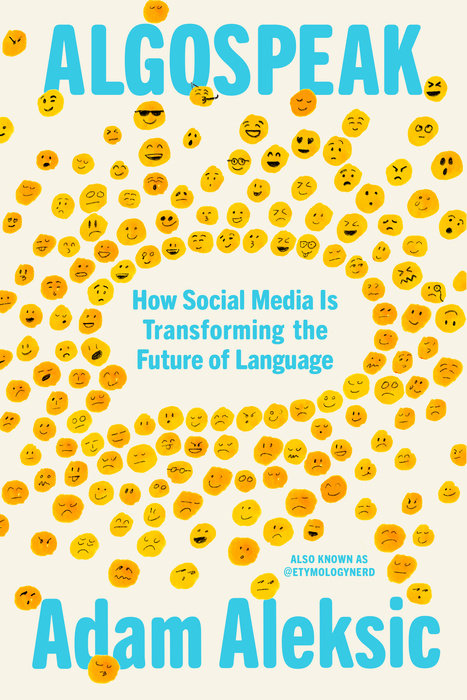
In Algospeak: How Social Media Is Transforming the Future of Language, linguist and influencer Adam Aleksic, better known as @etymologynerd, examines how social media algorithms are reshaping the way we communicate. From emoji hieroglyphics and viral slang to influencer “-core” aesthetics, Aleksic sets out to explain how the internet has launched us into a new linguistic era driven by trends, data, and digital culture.
At its core, Algospeak aims to blend two worlds: the academic study of linguistics and the chaotic, fast-moving reality of online speech. Aleksic’s background as both a trained linguist and a social media creator gives him a unique vantage point. He dives into phenomena like “brainrot,” “delulu,” “gyat,” and “rizz,” tracing their origins through digital spaces while exploring how algorithms accelerate the evolution of slang. The book also touches on larger questions about how platforms shape language itself how moderation, shadowbanning, and keyword censorship force users to develop new coded forms of expression.
The premise is undeniably fascinating, and Aleksic’s enthusiasm for language is infectious. His writing is energetic and conversational, full of references to viral moments and meme culture. For readers who live and breathe online discourse, the book offers a sense of recognition and even nostalgia for how fast everything changes. Lori, one of the reviewers, appreciated Aleksic’s firsthand insight into the challenges of content creation, especially his reflections on “shadowbanning” and adapting to algorithmic rules.
Yet, for many readers, Algospeak fails to live up to its academic promise. Trin, another reader, captured this frustration best: what starts as an exploration of internet linguistics quickly turns into a chronicle of Aleksic’s influencer journey. Instead of rigorous analysis, the book often feels like a highlight reel of his viral moments. The examples “gyat,” “The Rizzler,” “skibidi” are repeated so often that they lose their power, and there is little deep linguistic examination of their cultural or social roots.
Some of Aleksic’s claims are also questionable. Trin points out several sweeping and inaccurate statements, such as declaring that incels did not exist before the internet or that fashion only became socially relevant with social media. These overgeneralizations weaken the credibility of his argument, especially for readers looking for genuine linguistic insight. While Aleksic occasionally offers glimpses of brilliance like his brief discussion on how American Sign Language has evolved online these moments are fleeting.
The book’s scope feels too narrow to match its title. Lori’s review highlights this well: Algospeak focuses almost entirely on the past decade, ignoring the broader historical shifts in language that could have grounded its observations. Readers hoping for an in-depth, long-view study of how digital communication fits into the evolution of human language may come away disappointed.
In the end, Algospeak succeeds more as a snapshot of modern internet culture than as a serious linguistic exploration. It is entertaining, energetic, and peppered with interesting tidbits, but it lacks the analytical depth that the subject deserves. Aleksic’s passion for online language is evident, but too often, it feels like he’s speaking the language of the algorithm rather than about it.
For readers curious about how TikTok, Twitter, and memes are shaping the words we use, this book is a lively introduction. For those seeking a deeper, evidence-based study of linguistic transformation, it may leave you scrolling for more substance.


